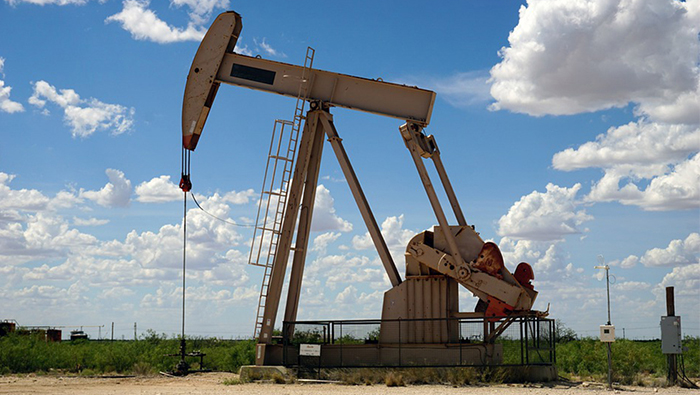
Muscat: Crude oil prices during the first week of April-2024 breached the $90 per barrel mark for the first time since October-2023, according to a new report.
“Crude oil futures prices have gained almost 10 percent over the last one month,” Kamco Invest said in its Oil Market Monthly Report April 2024.
“The market witnessed consistent gain in prices following Opec+ decision to maintain its current policy of cutting oil output, contrary to market expectations that eyed higher output due to elevated prices,” the report further said.
Strong imports of crude oil by China supported on the demand side and statements from the Organisation of Petroleum Exporting Countries (Opec) showing strong seasonal summer demand for crude oil also resulted in higher prices. Nevertheless, higher inventories in the US capped gains during the month, the report added.
The oil market tracked developments in the Middle East region, especially related to ceasefire talks and repeated failure on this front resulted in consistent gain in prices since mid-March-2024. The risk premium on crude oil prices shot up prior to the retaliatory attacks by Iran resulting in consistent gains but the symbolic nature of the action with minimal damage resulted in a slight correction in crude oil prices. In addition, the attacks on Russian energy refineries and the counter strike by Russia on Ukrainian energy facilities during the last week of March-2024 also resulted in higher crude oil prices.
Prices of almost all crude grades reported gains for the third consecutive month during March-2024. Average spot Brent crude oil price was up by 1.8 percent to reach $85.44 per barrel during March-2024 as compared to $83.9 per barrel during February-2024. The gain in average Opec reference basket price was much stronger at 3.8 percent to reach $84.3 per barrel while Kuwait export grade crude witnessed a slightly lower gain of 4.3 percent to average at $84.8 per barrel during March-2024. Meanwhile, the consensus estimate for Brent crude underwent minimal positive changes from last month’s forecast for the next two quarters. Prices are expected to average at $83.5 per barrel in Q2-2024 and show gradual growth until Q4-2024 to reach $84 per barrel. Price forecasts from the US Energy Information Administration (EIA) once again underwent an upgrade for Brent which is forecasted to reach $89 per barrel in 2024 against $87 per barrel in the previous forecast whereas next year price is expected to come in at $87 per barrel.
Crude oil prices touched the highest level in five months at the start of April-2024 mainly led by supply side fears. “This included fears of an escalating geopolitical situation in the Middle East region with a potential impact on oil supplies,” Kamco Invest said in its report.
In addition, the Opec+ decision to maintain the current output policy with voluntary cuts further indicated tighter markets in the near-term as supplies would remain constrained. On the other hand, resilient inflation rates in the US affected sentiments on the demand side, partially offsetting the overall rally in crude oil prices.
In addition, the recent symbolic attacks by Iran only had a minimal positive effect on oil prices.
That said, the decline was somewhat capped by a temporary surge in crude oil imports from China during March-2024.
Furthermore, a report from the IEA said global crude oil output is expected to reach a record level during 2025 following a year-on-year (y-o-y) increase of 1.4 million barrels per day (mbpd) to reach 104.5 mbpd in 2025.
The increase is expected to come mainly from the US that is expected to see record oil output next year. The EIA expects next year’s output in the US to reach 13.7 mbpd as compared to 13.2 mbpd expected this year. However, the EIA expects production to decline during 2Q-2024 and 3Q-2024 led by high decline rates for shale wells followed by a rebound next year. The cost of drilling in the US is also expected to go up following a new rule passed by the Biden administration that significantly increased the minimum oil and gas lease bond amount. In addition, restrictions from developing in sensitive wildlife habitat would affect expansion of output, especially in the Alaska region.
Oil output from the OPEC group remained flattish m-o-m at around 26.6 mbpd after marginally higher output from Iran and Saudi Arabia were almost fully offset by decline in output in Nigeria, Iraq and Venezuela. Oil production in the US has also remained flat over the last five weeks at 13.1 mbpd, according to data from the Department of Energy. The flattish trend in the US reflected subdued growth in oil rig count that hovered around the 500 mark over the last few months.
On the demand side, concerns continued to remain due to various factors including sticky inflation in the US that came in at higher-than-expected levels for March-2024 mainly led by higher rents and gasoline prices. The US is now expected to delay starting rate cuts this year with consensus showing first cuts in September-2024, in addition to lesser cuts this year than previous expectations. Meanwhile, the IEA also warned of slower oil demand growth next year mainly led by slower economic growth as well as rising popularity of electric vehicles globally. However, this comes contrary to the bullish demand growth expectations given by the biggest oil traders.